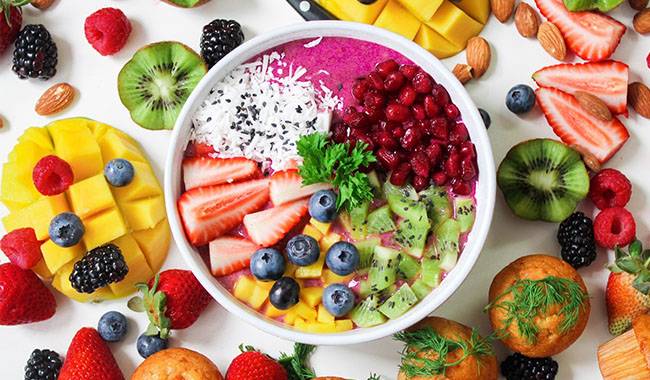
Success in sports is not only related to the quality and quantity of your training, but also to your nutrition. In this LCN Outdoors article, we look at the basic concepts of carbohydrates, proteins, and fats with some healthy workout recipes, as well as suggestions for consuming them during different physical activities.
Warning: Don’t start reading this article while hungry; you may want to stop reading and run to the nearest grocery store. Carbohydrates are natural organic compounds made up of individual “units” – sugars.
Healthy Workout Recipes For Carbohydrates
For our bodies, carbohydrates are the primary “fuel” that provides energy for all the processes that occur in the body. Once in the intestine, carbohydrates are broken down into individual sugars. Through the intestinal wall, they enter the bloodstream. The body derives energy from the processing of these sugars.
Carbohydrates are divided into two groups: fast and slow.
A. Fast carbohydrates
They have a simple structure. Therefore, the body breaks them down quickly and starts them in the bloodstream. Thus, for example, the path from the cookie in the mouth to the energy burst is short. But the duration of this energy will also be very short. After the energy burst, there will be a sharp drop in energy. Once again, cookies are needed!
Examples of fast carbohydrate sources.
- fruits;
- berries.
- sweet vegetables, such as carrots and pumpkin.
- honey;
- milk;
- edible sugar.
- sweets, pastries, candies.
Fast carbohydrates are quickly digested, but the effect of this energy will also be short-lived.
On the issue of industrial confectionery. It’s not just the high sugar content – unmatched by any fruit – that’s bad for you. It also has a high-fat content. The fat issue is covered later in the article. High sugar intake can lead to metabolic disorders, diabetes, and obesity.
B. Slow Carbohydrates
They have a complex structure. It takes longer for the body to break them down and gradually send them into the bloodstream. This ensures that we stay fuller and more energetic longer after eating slow carbohydrates. It also helps you make healthy food choices throughout the day instead of exploding in sweet treats. You remember how appealing cake becomes when you’re hungry, don’t you?
Examples of slow carbohydrate sources.
- Grains – oatmeal, buckwheat, brown rice, pearl barley, couscous.
- Legumes – peas, chickpeas, beans, lentils.
- Whole grain products – whole wheat bread, whole-wheat pasta.
- Vegetables.
- Bran.
Grains, legumes, vegetables, whole wheat bread, and pasta help you stay full and full of energy for a longer period of time.
C. How many carbohydrates to eat
Eating enough carbohydrates is the first step towards good sportsmanship and improved performance. They are our main source of energy. Carbohydrates should make up 45-55% of your total daily food intake. This is more important than protein and fat.
Combination 1
People who exercise to stay fit: Pilates 2-3 times a week, yoga, light 3 miles (4.8 km) jogging, short/low rope rock climbing or bouldering sessions, high-intensity interval training, fitness. Adequate carbohydrate intake for these individuals is 3-5 g/2.2 lbs (1 kg)/day.
Examples of daily carbohydrate sources for a person weighing 150 lbs (68 kg)
- 1 cup of cooked grains – oatmeal, buckwheat, lentils
- 2/3 cup cooked whole wheat pasta.
- 1 slice of palm-sized whole wheat bread.
- 1 kind of fruit.
- 4 kinds of vegetables.
- 1 cup of green vegetables.
A great lunch choice made up of a mix of carbohydrates – grains, vegetables, and greens with protein – chicken.
Combination 2
People who do moderate physical activity 4-5 times a week: 3-6 mile (4.8-9.6 km) jogging, rope climbing or rock climbing, weight training, TRX exercises. Adequate carbohydrate intake will be higher for these people – 5-7 g/2.2 lbs (1 kg)/day. Please feel free to add a cup of cereal and a piece of bread to the list above.
Combination 3
Athletes who do 5-6 times a week of 2-3 hours of heavy activity: 10-15 mile (16-24 km) long runs, long rope climbs or rock climbs, weight training. The amount of carbohydrates they need is already 6-10 g/2.2 lbs (1 kg)/day. For the average person, eating this much food can be a challenge, as the list above needs to be multiplied by 2.
In a daily diet, slow carbohydrates and natural fast carbohydrates such as grains, vegetables, and fruits are preferred. Fast industrial carbohydrates, such as candy and sports nutrition, are only needed when an emergency energy boost is needed, such as during a race, on the course or when climbing a hill.
A meat-free carbohydrate – a protein variation. The main source of protein here will be chickpeas.
D. Carbohydrates and training
As athletes, our main concern is the energy supply to the muscles. Carbohydrates can be stored as glycogen in the liver and muscle tissue and will be used during their contraction. Pre-, intra-, and post-exercise carbohydrate intake strategies are designed precisely to maintain glycogen stores.
1. Pre-exercise carbohydrate intake
It has been found that it takes approximately 4 hours for carbohydrates to be digested and absorbed into the muscles as glycogen. Therefore, it is best to eat a full meal 4-6 hours prior to training. For example, if an athlete trains in the afternoon, then breakfast is important to increase glycogen in the muscles.
To avoid hunger when you start your workout, you can eat a light meal of fast carbohydrates and protein 30-60 minutes before the workout begins. For example, 50 grams of carbohydrates and 5-10 grams of protein are included in one oatmeal. And adding a cup of Americano to it will speed up the replenishment of glycogen in your muscles. Such a snack will keep your muscles energized at the end of your workout and reduce muscle damage during exercise.
Examples of a complete breakfast of carbohydrates, proteins, and fats.
- Oatmeal with milk, banana, and peanut butter.
- Egg, redfish, and salad leaf sandwich on whole wheat bread; bread can be toasted in a dry pan or toaster.
- One slice of whole wheat bread with herbs and scrambled eggs.
Sandwiches, like porridge, offer plenty of room for experimentation. You can use whole wheat bread as a base and add a variety of vegetables and herbs, eggs, meat, fish, tofu, and cheese. Such a delicious breakfast will not only recharge your body but your mind as well.
Carbohydrate, protein, and fat options for hiking breakfasts.
- Quick porridge, preferably multigrain or “7-grain”, and cheese and/or sausage.
- bread with cheese and/or sausage, plus a couple of sweets and/or dried fruit for energy and spirits.
- For those who wake up hungry, a proper meal like boiled porridge or a second course for travel is an option.
Porridge for camping is often too sweet. The solution is to make this ready-made mixture yourself. For example, use oatmeal, a dollop of dry cream, dried berries, and your favorite nuts, and add sugar and salt to taste as you cook.
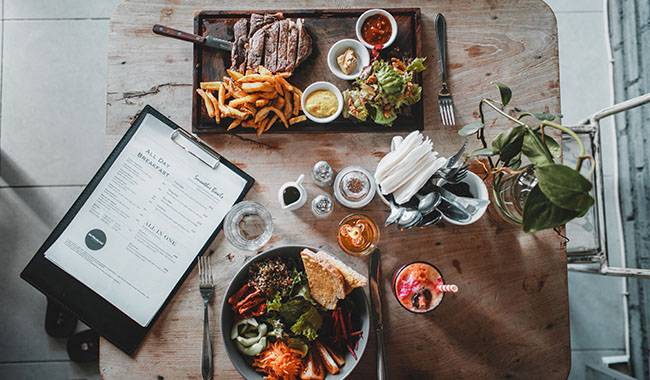
2. What are fortified carbohydrates
Fortified carbohydrates are a way to increase glycogen stores in the muscles and liver in advance and in excess. This strategy works well for loads longer than 90 minutes, where your maximum endurance is required. Examples include marathons, long-distance trail runs, multi-terrain trails, bike races, and triathlons.
Two to three days before the start of the race, along with the reduced intensity of training, it is recommended that athletes consume an additional 200-300 grams of carbohydrates per day. Such a diet can lead to an over-saturation of glycogen reserves. This means having enough power to keep your muscles working hard for a long time.
Examples of carbohydrate-loaded meals that will not only boost glycogen in your muscles but also your mood.
- whole wheat pasta with tomato sauce.
- pizza with tomato sauce or feta cheese and spinach.
Pasta with tomato sauce or feta and herb pizza is a great option for carbohydrate loading. It’s best to make them at home to determine their composition.
If you’re camping or on the rocks and the main activities of the full-day outing – summit raids, multi-window routes – are planned over a few days, add bread to your meals, cook with cereals and pasta, and save the soup for the descent and recovery.
3. Carbohydrate intake during exercise
Exercises that are up to 60 minutes long do not require carbohydrate intake during exercise. If the workout lasts longer than an hour, or even more than 90 minutes, you need to refuel with carbohydrates. The best option is a solution of carbohydrates and electrolytes: an isotonic sports drink with carbohydrates. This form not only adds fuel during exercise but also prevents dehydration.
- If exercise lasts 1-2.5 hours, 30-60 grams of carbohydrates are needed. Stretch the drink for an hour, taking sips every 10-15 minutes.
- If exercise lasts longer than 2.5 hours, the amount of carbohydrates per hour should be increased to 60-70 grams.
Another form of “supplemental” carbohydrate gels. They are a soft pack of one dose and contain about 22-23 grams of carbohydrate per dose. Caffeine, amino acids, and other sports supplements are often added to the gels. Such gels can be taken every 20-25 minutes during intense exercise. They are easier to digest during exercise and provide energy faster than solid foods. Such gels are suitable for consumption during running, cycling, and hiking, especially in hot conditions. Some gels need to be washed off with water. This can be uncomfortable in some cases.
Sports gels are a quick way to replenish carbohydrates during a marathon or extra-long distance exercise.
Tip: Test the gels ahead of time to see if they taste too sweet or special for you. Also, check how your GI tract reacts to this form of carbohydrate during exercise. It’s better to feel sick during a regular workout than during a race or on a route.
You can decide whether to refuel with a sports drink or a gel, depending on your comfort level and personal taste. Hiking variants for energy when traveling, hiking, or touring are isotonic tablets for dissolving in water, plus gels and/or granola and/or dried fruit and nut bars.
4. Post-exercise carbohydrate intake
It is recommended that athletes eat a carbohydrate and protein meal within 30 minutes of training. For example, 1 g/2.2 lb (1 kg) of carbohydrate and 0.5 g/2.2 lbs (1 kg) of protein. This could be a sandwich of whole wheat bread, cheese, and bell peppers. Or about 100 grams of 5% cottage cheese with a banana. Then eat a high carbohydrate food within 2 hours. For example, roughage of roasted vegetables. This post-workout eating strategy speeds up glycogen replenishment in the muscles and helps accelerate muscle recovery and growth.
Camping options after hiking/horseback riding/raiding.
- spaghetti or buckwheat stew.
- steamed couscous with canned meat or fish.
- slow carbohydrate freeze-dried dishes: pasta, grab-and-go, potato stew.
- instant noodles with cheese and/or sausage and crusty bread.
After heavy work, a meal of cereal can replenish glycogen reserves in the muscles and liver.
One last thing about carbohydrates. You don’t need to be afraid of them. Whole grain bread and pasta and cereals will not make you fat. Instead, if you give your body plenty of carbohydrates – both slow and naturally fast – it will have the resources for metabolism, exercise, and muscle growth. If you don’t have enough of both types of carbohydrates, you may start to have problems with
- Central nervous system disorders – dizziness, drowsiness.
- The body uses protein for fuel, the consequences of which are overburdened kidneys and muscle atrophy.
- Fatty degeneration of the liver due to depletion of glycogen in the liver.
- Protein is a high molecular weight organic substance that is the basis of cell structure and metabolism.
Protein – Healthy Workout Recipes
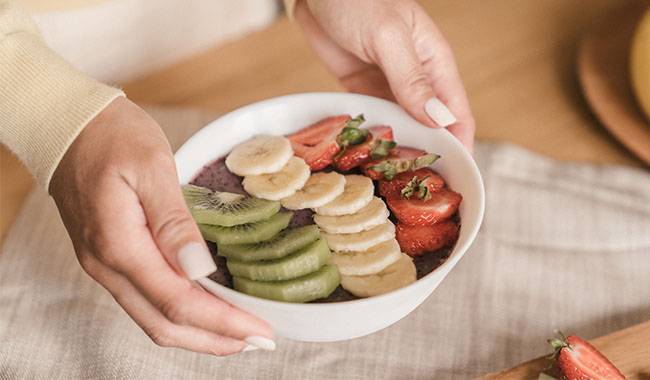
Protein is not just the material that makes up beautiful muscles. Every cell in the body has a protein structure, whether it’s a muscle, cartilage or ligament, or the liver, brain, or heart. Protein also helps the immune system work, transports oxygen and hormones, “weaves” DNA properly, makes muscles contract, processes food, and more.
Protein can be used as a source of energy, but it is less efficient than carbohydrates and fats.
The proteins we get from food can be divided according to the type of source: animal and plant. Their amino acid combination will differ and the degree of absorption, i.e. how much protein will be absorbed by that product.
A. Animal protein
Such a protein will contain all the amino acids and have a high digestibility of 93-96%.
Examples of animal protein sources.
- Examples of animal protein sources.
- meat – chicken, turkey, beef.
- Eggs ;
- fish and seafood – tuna, salmon, shrimp
- dairy products – white cottage cheese, natural yogurt, cheese.
Meat, eggs, fish, and dairy products have all the essential amino acids.
B. Vegetable protein
These proteins are lower in essential amino acids and less digestible than animal proteins – 62-80%.
Examples of plant protein sources.
- soybeans, tofu.
- legumes – lentils, chickpeas, beans.
- nuts.
- seeds – sesame, pumpkin, chia seeds.
- grains – buckwheat, rice.
- vegetables – spinach, asparagus, avocados.
Plant-based proteins have fewer amino acids than animal proteins and are not as easily digested. In order to get a full range of amino acids, you need to consume both types of protein and make your diet as varied as possible.
C. How much protein to consume
Protein should make up about 35% of your daily diet. The total protein intake for the average person is 0.8-1 g/2.2 lbs (1 kg)/day.
Examples of daily protein sources for a person weighing 150 lbs (68 kg).
- chicken thigh meat;
- 1 cup of lentils.
- 100 g of 5% cheese.
Combination 1
People who perform 2 moderate physical activities per week: group exercise classes, weight training, Pilates, yoga, light 3 miles (4.8 km) jogging, short/low-demand rope climbing, or rock climbing sessions. For these people, the protein intake should be 1.2-1.7 g/2.2 lbs (1 kg)/day. That said, a portion of fish – tuna, cod, redfish – can be added to the above list.
Combination 2
People who do 4-5 times a week moderate-intensity physical activity: rope climbing or rock climbing, jogging 4-5 miles (6-8 km), strength training. The upper limit of their protein intake will be slightly higher – 1.2-2 g/2.2 lbs (1 kg)/day. You can add 2 eggs, 6 walnuts, and 2 slices of tofu to the above protein list.
Combination 3
Athletes who engage in strenuous exercise 5-6 times per week for 2-3 hours. For example, long climbs with ropes or boulders, doing long runs of 10-15 miles (16-24 km), training with weights. For these people, the amount of protein needed would be 1.7-2.2 g/2.2 lbs (1 kg)/day.
Let’s rewrite the list of possible protein sources for these hard workers.
- grilled tuna – serve from the palm of your hand;
- cheese – 6 slices, parmesan is preferred because it contains more protein
- 2 eggs ;
- 1/2 chicken breast or thigh.
- 1 cup of boiled chickpeas.
6.100 grams of 5% cheese.
Protein should make up about 35% of the average person’s daily diet; for athletes, this percentage is higher.
Large doses of protein, more than 3 g/2.2 lbs (1 kg)/day, maybe needed occasionally by weight-bearing athletes to reduce the amount of body fat during competition. For other athletes, large doses of protein, more than 2.2 g/2.2 lbs (1 kg)/day, do not improve body composition or performance. Protein intake should be distributed throughout the day in doses of about 0.3 g/2.2 lbs (1 kg). On average, this is 20 grams of protein at intervals of 3-4 hours.
20 grams of protein are.
- 1 cup of beans.
- 2 slices of tofu.
- 100 grams of 5% cheese.
- a handful of nuts.
Hiking protein sources are
- canned meat and fish.
- soft-packed ready-made meat – stews.
- canned beans;
- soy meat – sold in dried form and requiring boiling or soaking in boiling water and spices.
- additional cheeses and/or sausages for meals and snacks
- cured/dried meats.
- protein bars.
On hikes and expeditions, it is important to follow a standard protein intake in order to recover quickly and keep your energy levels up.
If protein intake is inadequate, post-exercise recovery will be slowed and protein breakdown will take precedence over protein production. Over time, this can lead to muscle failure, injury, illness, and exercise intolerance.
D. Protein and exercise
1. Pre-exercise protein intake
We have already mentioned this in the section on carbohydrates. 30-60 minutes before exercise, eat a mixture of fast carbohydrates and protein. For example, 50 grams of carbohydrate and 5-10 grams of protein. This could be an energy cereal bar. Add a legal stimulant – freshly brewed coffee – if you like – and you’re sure to have a productive workout!
If the goal of your training is to increase muscle mass, then the amount of protein in your snack should be increased to 0.25-0.40 g/2.2 lbs (1 kg). This amount can be found in protein bars.
Eating oatmeal 30-60 minutes before exercise can help improve the efficiency of your workout.
2. Protein intake during exercise
If you do endurance training, it is worth adding about 0.25 g/2.2 lbs (1 kg) of protein to your hourly carbohydrate “supplement”. This will reduce potential muscle damage, reduce the subjective sensation of muscle pain, and increase muscle protein synthesis.
A protein bar can be one such protein supplement. Test it out ahead of time to see how your body reacts to solid foods during exercise. If this doesn’t work, leave the gel or sports drink to be consumed during exercise.
For other types of exercise, no data has been found on the need for protein “supplementation”.
3. Post-training protein intake
If you performed a running workout, it is recommended that you consume a mixture of carbohydrates and protein – for example 1 gram/2.2 lbs (1 kg) of carbohydrates and 0.5 gram/2.2 lbs (1 kg) of protein – within 30 minutes of completing your workout. This tasty snack could be a sandwich of whole wheat bread, parmesan cheese, and tomatoes. The mixture of protein and carbohydrates will replenish glycogen in your muscles and stimulate muscle growth.
If you have been climbing, eat a meal consisting of 60% protein, 30% carbohydrate, and 10% fat within 30 minutes of the end. For example, the same sandwich as after a run, but add chicken tenders or grilled chicken with zucchini, potatoes, carrots, and onions.
If building muscle is critical to you, you can have an extra protein snack within 2 hours of training. For example, two hard-boiled eggs with a leafy salad. But stay within your daily protein intake. An interesting fact: There is no difference in the increase in muscle mass when consuming protein before or after a workout. That said, you can adjust this regimen to how you feel.
When hiking after a long trek or after a day of rock climbing, generously include stews, sausages, and cheeses in your meals and chew on dried meats over tea.
When hiking after a long traverse or a day of rock climbing, generously include stewed meats, sausages, and cheeses in your meals and chew dried beef over tea.
Fat – Healthy Workout Recipes
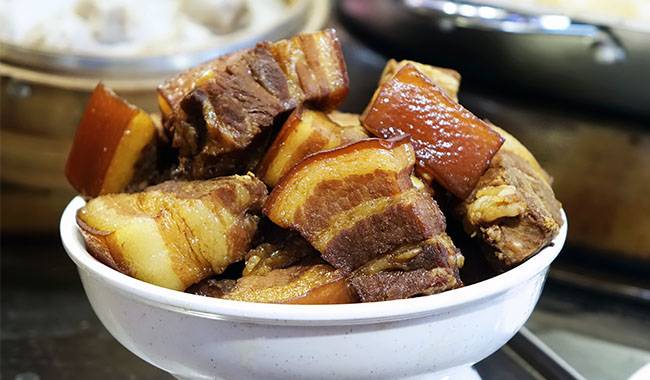
Fats are organic substances. Their main functions are in the body.
- Structural. Together with proteins, fats from the cell wall that separates the cell contents from the external environment, maintains its integrity, and carries out the exchange between the cell and the environment.
- Vitality. Fat cells are the body’s energy reserves.
The fats we get from food are divided into three main categories: saturated fats, unsaturated fats, and trans fats. They differ in chemical structure, physical properties, and taste.
A. Saturated fats
No, the name is not because they are filling, but because of the structure of the molecule. Most saturated fats are not completely absorbed by the body, only 80-90%. The extra portion stays in the body. That’s why it’s important to maintain a moderate intake of these fats. Otherwise, there is a risk of plaque accumulation in the blood vessels and the formation of abdominal “air pockets”.
Examples of sources of saturated fats.
- red meat – beef, pork, lamb.
- milk and dairy products – cheese, butter, cream.
- vegetable fats – palm oil, coconut oil.
Most of the saturated fats from red meat, dairy products, palm oil, and coconut milk are not fully absorbed by the body. Therefore, it is important to observe their intake rate.
B. Unsaturated fats
This name is also a result of the molecular structure of unsaturated fats. Such fats are better absorbed by the body and perform more useful functions. For example, they are essential for the proper functioning of the cardiovascular system and the production of hormones. But you must be careful how you consume them, if only for your metabolism.
Examples of unsaturated fat sources.
- turkey ;
- salmon, tuna, mackerel.
- nuts.
- avocados;
- Flax seeds;
- olive oil;
- sunflower seeds and oil.
- sesame seeds.
Unsaturated fats are required for normal cardiovascular function and hormone production.
C. Trans fats
These fats are used in the food industry to improve taste, increase fat content, and extend the shelf life of products.
Trans fats are obtained by the hydrogenation of unsaturated fats. They are usually listed as “hydrogenated oils” in the ingredients of products. But if you don’t see the name, there’s no guarantee they’re not in there. Often, just the “palm oil” in a chocolate bar is completely hydrogenated. And trans fats also include the well-known margarine.
Trans fats are extremely harmful to the body. Ideally, they should be eliminated from consumption. This is the recommendation of the World Health Organization.
Examples of sources of trans fats.
- industrial confectionery – candy, chocolate, cookies, cakes.
- fast food.
It looks appetizing, but like all industrial candies, it has a lot of trans fats in it.
D. How much fat you should eat
The amount of fat for athletes is no different than what is recommended for people who do not exercise – about 30% of their daily caloric intake. However, if there is an interest in reducing fat deposits, fat intake is reduced to 0.5-1 g/2.2 lbs (1 kg)/day, which is about 20% of daily caloric intake.
Examples of daily fat sources for a person weighing 150 lbs (68 kg)
- butter – 1 teaspoon.
- 1/2 avocado.
- curd – 1 cup.
One cup of sour milk is the daily fat intake for a man weighing 150 lbs (68 kg). Please note that you should not eliminate fat from your diet and switch to fat-free foods in hopes of losing weight. Fats from natural foods are essential for proper metabolism.
E. Fats and Exercise
Fat intake is distributed throughout the day according to one’s preferences. For example, you have a hard time exercising after eating fat. Then you can eat a granola bar or dates with 5% cottage cheese 30 minutes before exercise instead of a snack of parmesan cheese and butter sandwich.
Sources of fat in camping conditions.
- nuts.
- canned fish.
- meat – stewed, dried in the sun.
Nuts are a good source of fat for camping and a good snack.
Tips For Healthy Eating
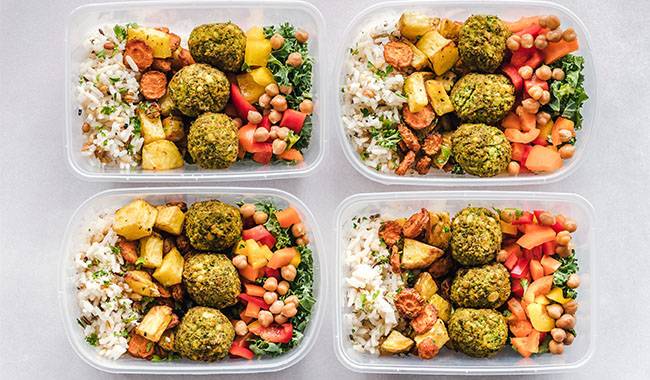
- It is not easy to start counting proteins, fats, and carbohydrates. Special apps can be of great help. there are many such apps on the App Store and Google Play. They are searchable both by food and by cooked food. Each food has a calorie, protein, fat, and carbohydrate content. You can add the number of grams or servings you eat to “Your Day”. One problem might be figuring out how many grams your steak weighs. There are two solutions – a kitchen scale or a Google query for “what does 100 grams of beef look like”.
- Try it. All the advice on carbs, protein, and fat is averaged out. And we are all organisms with our own particularities. Try adding carbs or protein before or after training, try a protein breakfast and a carbohydrate dinner. Study your body and look for ways to improve its capabilities.
- Eat as varied a diet as possible. Try new grains and vegetables, look at more new recipes, buy unfamiliar foods.
- Go the route of increasing rather than banning. Instead of banning cookies permanently, add protein or cereal to your lunch and vegetables to your dinner. And the number of cookies in your diet will subtly decrease.
- Reading labels is a powerful weapon in food tactics. Look at the ingredients: usually the shorter, the healthier the product. Pay close attention to the protein, fat, and carbohydrate content. Sometimes “ecological crackers with cereal and dietary fiber” have as much fat as potato chips.
- Make your grocery list for the week ahead of time and plan your menu – the meals to prepare and the snacks to eat.
- Don’t go grocery shopping hungry so you don’t buy too much.
- Food should make you happy.
We’ve looked at the basic concepts of carbohydrates, proteins, and fats as well as dietary recommendations for athletes. Workout with results, eat with gains!